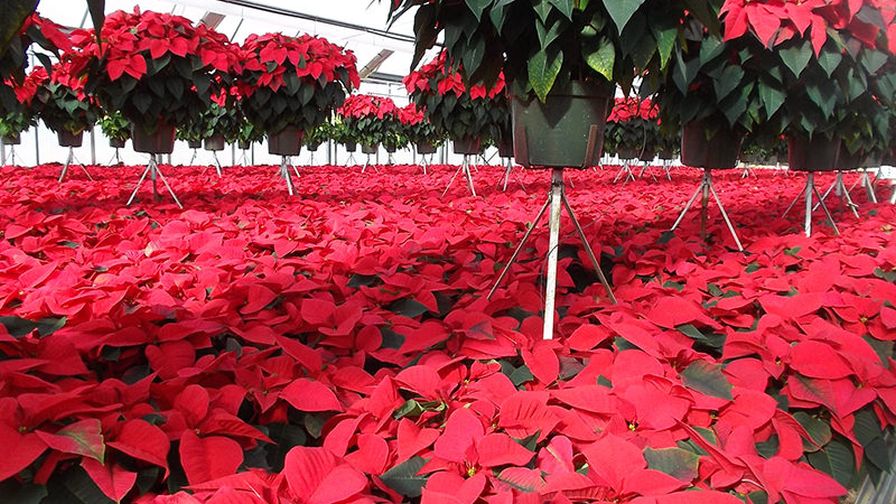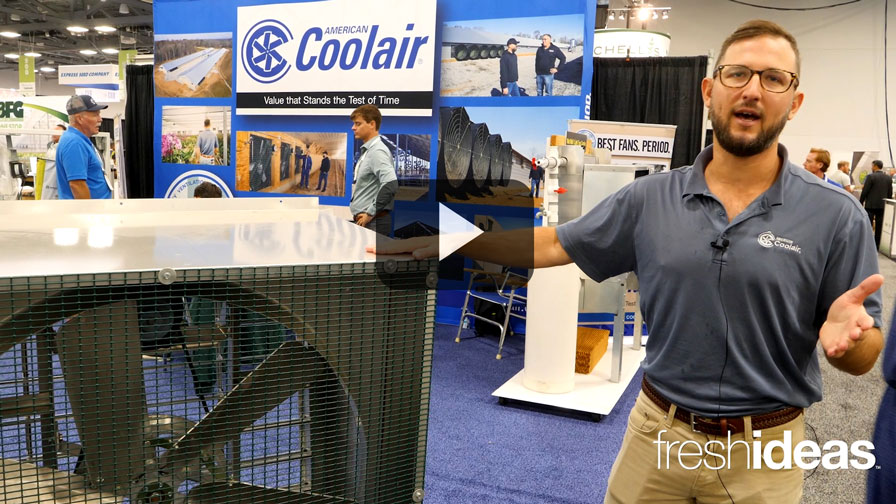Tips on Proper Poinsettia Fertilization in the Greenhouse

Photo: Premier Tech
Because poinsettia is a longer crop than most grown in the greenhouse, it can come with additional challenges. One of these challenges is fertilization. A recent educational article from Premier Tech Horticulture presents guidelines on the important elements that poinsettias need, as well as application rates depending on the stage of plant development.
Most fertilizers are not formulated with sufficient calcium, magnesium, and possibly molybdenum for the needs of most poinsettias. Thus, there is typically more than one fertilizer used for a poinsettia crop. Before selecting a fertilizer, look at your water analysis, as your water may have sufficient calcium and/or magnesium to bridge the gap.
There should be a constant application rate of at least 80-100 ppm calcium and 35-50 ppm magnesium, and the growing medium should have 100-200 ppm calcium and 30-80 ppm magnesium throughout the crop cycle.
If the water source does not have sufficient calcium, then a cal-mag fertilizer can be used (keep in mind this will cause the growing medium’s pH to rise). If this is not sufficient, then 15-0-15 could be rotated with another acidic fertilizer.
Growers have also used calcium nitrate foliar feeds at rates of 300-400 ppm nitrogen, once per week. Calcium application is most critical during bract formation as they are most sensitive to bract edge burn, which is often caused by calcium deficiency.
Keep in mind that calcium uptake from the growing medium might be compromised when the humidity in the greenhouse is high and the weather is cloudy, so foliar feeds may be more beneficial.
For more tips, including information on application rates and monitoring, check out the original article here.








